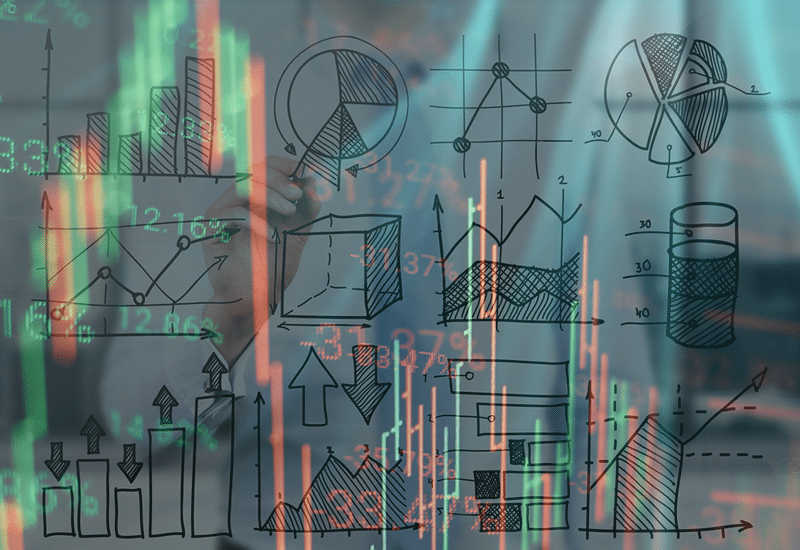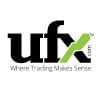
Quantitative trading is a market approach based on employing mathematical and statistical models in order to detect possible opportunities for profitability. The decision as to whether or not to execute them is left to the discretion of the investors. It is often referred to as ‘quant trading’ or just ‘quanting’ sometimes.
How does quantitative trading work?
Prices and volumes are the most crucial factors for quantitative traders, and the larger the data, the better. Quant trading is primarily data-driven, and it employs only statistical and mathematical tools to determine the likelihood of specific outcomes taking place.
In contrast to other trading systems, it depends only on statistical methodologies and programming. It demands a great deal of processing power to investigate widely and makes watertight theories from various data sets. In part, this is why quant trading has traditionally been considered a niche activity reserved for the most elite financial institutions and the ultra-wealthy. Although it has traditionally been used by institutional investors, in recent years it has become increasingly popular among ordinary investors.
Even though they are closely related, quantitative and algorithmic trading are two distinct strategies that should not be confused with one another. Algorithmic traders utilize automated systems that examine specific patterns and subsequently open and close their positions. This is unlike quant traders, who employ statistical approaches to find opportunities without having to act on them.
While volume and price carry more weight in quant trading, any other relevant factor can be converted into a numerical equivalent and integrated into the strategy.
In order to build their models, quant traders rely on a variety of publicly available databases. In order to detect patterns outside of standard sources, such datasets can be employed to identify trends.
Traders who engage in quantitative trading employ computer languages to retrieve historical data from the financial market through web scraping.
A step-by-step guide to the quant trading process
1. Identification of strategy
In order to trade quantitatively, you must first do your research. This research method includes a strategy that examines whether the approach is in line with the other strategies that you typically prefer.
In addition, it obtains all the information needed to test the plan and attempts to optimize the approach to increase your profitability and reduce risk exposure. You will also need to evaluate the capital implications of your chosen strategy, as well as the extent to which it might influence trading-related expenses such as brokerage fees and commissions.
2. Backtesting
Backtesting is the process of determining how a strategy will perform on live markets when applied to historical data. It is an important element of quant trading because it enables the system’s developers to identify elements of the setup that do not work properly or are too divergent from live trading.
Backtesting is a vital aspect of any automated trading system, but when the model is live, success does not ensure profit. A well-tested plan, incorporating faulty historical information or unforeseen market changes, can nonetheless lead to failure of the setup.
When backtesting, one of the most typical problems is determining how much volatility a system will experience as it generates returns. Failure to incorporate the potential effect of volatility can therefore lead to underperformance or grossly poor performance by a trading model.
3. Execution
Each system contains an execution component, from fully automated to completely manual. An automated approach usually employs an API to open and close positions without human input as rapidly as feasible. A handbook may involve the trader calling his broker to place businesses. Minimizing transaction costs is a significant aspect of the implementation.
4. Risk Management
Risk is an inherent factor in any trading strategy, and every trading model should therefore integrate it. Risk encompasses practically anything that might conceivably interfere with the trading implementation, which can come from a variety of sources, including human error, technological failure, or sabotage.
The core qualities of a quant trader
Quantitative trading, in reality, is the closest thing you can come to full-time employment in applied mathematics. As a result, it is an excellent fit for people who are particularly gifted in solving complex mathematical and statistical problems and have a good understanding of financial markets. Also, good knowledge of computer programming will give you an edge in this field.
Advantages of quantitative trading
- When you backtest a quantitative strategy, you can see how well it performs based on historical data.
- It helps minimize human error and eliminates the impact of emotion in decision-making.
- It ensures faster decision-making and faster execution of trades.
- It consistently and systematically executes trading strategies.
Disadvantages of quantitative trading
- Developing an effective model is not only difficult but can take a long time and a lot of resources.
- It is necessary to periodically tweak the statistical formulas and algorithms in a model so as to align it to the ever-changing market conditions.
- It can fail if configured wrong.
In summary
Quantitative trading is a highly specialized area within the trading industry that requires specialized knowledge. While it used to be the exclusive resource of large institutions and the ultra-rich, it has in recent times been adopted by many individual traders. With the rising popularity of artificial intelligence, quant trading may just be taken to a new level in the near future.








Leave a Reply